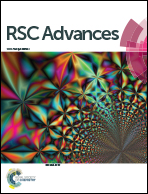Effect of pre-imidization on the structures and properties of polyimide fibers
Abstract
A series of polyimide (PI) fibers derived from 3,3′,4,4′-biphenyltetracarboxylic dianhydride (BPDA), 4,4′-oxydiphthalic anhydride (ODPA) and p-phenylenediamine (p-PDA) were successfully prepared through a partially pre-imidization process, and the effects of different amount of dehydration reagents and initial poly(amic acid) (PAA) concentrations on the structure–property relationship of the resultant PI fibers were systematically investigated. The results showed that both the increased amount of dehydration reagents and PAA concentration could result in the ordered molecular packing arrangement of the polymer chains and gradually formed homogeneous structures in the fibers, which are proposed to be essentially dominated for the effectively enhancement in the mechanical properties of PI fibers. Moreover, the PI fibers obtained through the pre-imidization process still exhibited excellent thermal-oxidative stabilities, although the 5% weight loss temperature of the PI fibers was slightly decreased compared with that of the pure PI fibers as a result of the residual dehydration reagents in the fibers. Consequently, the present work provided a new approach in preparing high-performance PI fibers through a partially pre-imidization process.


 Please wait while we load your content...
Please wait while we load your content...